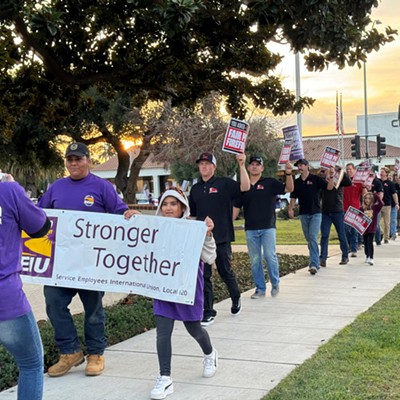For the past several months, more than 100 public speakers in Lompoc have been asking for the right to vote on a general sales tax measure that would add revenue to the general fund. After initially resisting, the council has decided unanimously to let the folks do just that in March 2020.
Back in 2008 when an earlier half-cent proposal was being considered, the public wasn’t nearly as involved as they have been in the current discussion. There were a couple of sparsely attended workshops, and in the final workshop there was a consensus to support a “public safety tax.” However, as the workshop ended, the council immediately began a public hearing to place the issue on the ballot.
What was originally a true public safety tax to improve fire and police services morphed into something different in a matter of a few minutes; the language adopted by the council was much different than that discussed in the workshop that had just concluded minutes earlier, and the measure failed.
In 2017 it was much different story; during the lengthy series of 2017-19 budget hearings and workshop presentations, the city manager told the council that “the biggest financial hurdle facing Lompoc, according to staff, is the city’s obligation of about $70 million to the California Public Employees’ Retirement System, or CalPERS.” Although tax measures were proposed, they weren’t placed on the ballot.
Now, in 2019 the discussion has been inclusive and thus far transparent; council members who originally didn’t even want to talk about tax increases realized that without them the future was bleak. What was a $70 million CalPERS debt had now grown to $93 million, primarily because of poor fund management by the CalPERS board of directors.
This time the public has become engaged in the process; well more than 100 speakers have addressed the council and expressed their concern for the health of the City and specifically the need to improve public safety services.
During the final hearing to develop the ballot question that could produce a 1 percent sales tax, speaker after speaker stressed the importance of improving—not just maintaining—public safety, but some felt that the amount of money raised by the new tax wouldn’t be enough to do all the things on the list.
So, as the final wording was being discussed, Councilman Victor Vega made a motion to change “maintain” to “maintain and improve.” So the final version of the ballot question wording was, “To maintain and improve public services, including neighborhood police patrols, firefighter staffing, gang enforcement, crime and vandalism prevention, street improvements, community and recreational services, park upgrades, reduction of long-term liabilities (which includes a potential savings of $21 million in interest payments), and other general city services, shall the measure establishing an additional maximum 1 percent sales tax, ending in 15 years, and estimated to generate $4,800,000 annually, be adopted?”
Councilman Jim Mosby then made a commitment to support funding three police officer positions currently being held vacant as part of negotiated pay raises if the tax increase passed; this is a positive step and would bring the police department to its full 47-officer strength and enable reinstatement of vital services.
Mosby then said, “There are things around the corner to enhance this [tax increase],” but what are they? In the coming months perhaps, we will find out what those “things” might be.
One major problem that needs to be resolved is the ever-escalating burden of CalPERS; it seems that every year there is a surprise multi-million-dollar increase in what the “new” CalPERS debt is; between 2017 and 2019 the debt increased an average of more than $10 million each year. A plan is needed to create a consistent and predictable payment and interest rate on this debt.
And improving the city infrastructure—including parks, streets, fire/police stations, rolling stock, and even the City Hall complex—will take tens of millions of tax dollars to bring these facilities and the equipment up to a higher standard. Unfortunately, decades of penny-pinching neglect by the great thinkers of the past have left us in a bad situation.
In the coming months, the City Council and staff will make several presentations to educate the public concerning the technical aspects of this tax measure. Because the council can only “educate” the public, citizen groups are forming to gather public support for the proposal and provide more information.
Based on what we have witnessed with public comments on the matter, it appears that groups are forming on both sides of the issue—one supporting and one opposing. So far, the opponents do not have an alternate proposal to address the fiscal crisis the city finds itself in; instead they are choosing to simply say “it won’t work” without providing any detail.
In March, it will be up to the citizens of this city to determine whether they want to take the first of several steps to improve the city or wait and hope for a miracle that is unlikely to happen. In the coming weeks perhaps we will learn more, but for now I am willing to support this tax.
Let’s work together and encourage each other to vote for the tax so we can make our community safer and better! If this measure fails, it will surely mean that our unfunded long-term liabilities will continue to drain the general fund, and cuts in services will grow larger.
Ron Fink is a resident of Lompoc. Send your thoughts to [email protected].








